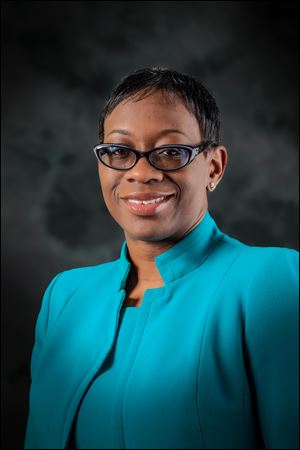
GUEST COLUMN
Let’s broaden, not restrict, Ohioans’ access to the ballot
To increase participation in our election system, we must stop restricting ballot access
2/9/2014
Turner
Last month, a bipartisan commission named by President Obama to recommend ways to streamline voting in the United States reported that voter fraud is rare. Although this revelation comes as no surprise to most of us, it may shock many of my colleagues in Columbus.
Halfway through this two-year General Assembly session, it has become harder for Ohioans to participate in their government. Citizens who want to place a referendum on the ballot now have less time to collect petition signatures. If not for judicial intervention, candidates who do not belong to one of the dominant political parties — but who have an equal right to run for office — would have found it harder to get their names on the ballot.
More than a half-dozen other measures before the legislature also would restrict access to the ballot in some way. Lost in the rush to stamp out exceptionally rare cases of voter fraud are the widespread and recurring obstacles that prevent countless eligible voters from casting a ballot.
America’s lackluster record of voter participation — usually around 60 percent in presidential election years — is well-known. But not all nonvoters choose to stay away from the polls.
According to a survey conducted by the Pew Research Center days after the 2012 election, nearly one in 10 respondents indicated that someone they knew tried to vote but was unable to do so. An analysis of U.S. Census data reveals that only 28 percent of nonvoters made a conscious choice not to cast a ballot. More than half of them might have voted if proper accommodations had been made.
Different obstacles handicap different would-be voters. Voters between the ages of 18 and 24 are twice as likely as other voters to have problems registering to vote. Voters who are 65 years old and older are prevented from casting a ballot by an illness or disability at twice the rate of others.
Eligible voters who earn less than $20,000 a year are seven times more likely than those who make more than $100,000 to face barriers to voting because of inadequate transportation. Not surprisingly, the wealthier voters are nearly twice as likely to cast a ballot.
By and large, our election system works well — but not for everyone. In a nation whose rate of voter turnout ranks in the bottom half among developed democracies, this is not good enough.
To increase participation and restore trust in our election system, we must stop restricting ballot access, reducing opportunities to vote, and changing the rules based on partisan political concerns. Along with measures that are designed to restrict access, at least a half-dozen bills before the General Assembly would enhance the voting process in Ohio.
This legislation, introduced by both Republicans and Democrats, would ensure that fewer eligible ballots are thrown out. The bills would make voting more convenient and secure for working families. They would help educate voters about their rights, responsibilities, and options at the ballot box.
Unfortunately, few of these bills have seen the light of day. They stand little chance in a legislature that is content to sacrifice the votes of many to prevent a handful of voter fraud cases.
Current laws are effective at catching the rare instances of voter fraud. Is it really worth preventing thousands more Ohioans from being able to cast a ballot to prevent voter fraud that is often claimed but seldom proved?
Elected officials should be making it easier for Ohioans to vote and have their voices heard, but efforts in Columbus are falling far short. Instead of fixing what is not broken and chasing problems that evidence shows are small, let’s refocus our attention on the real deficits in our election system, and help all Ohioans cast a ballot this Election Day.
State Sen. Nina Turner of Cleveland is a Democratic candidate for Ohio Secretary of State.